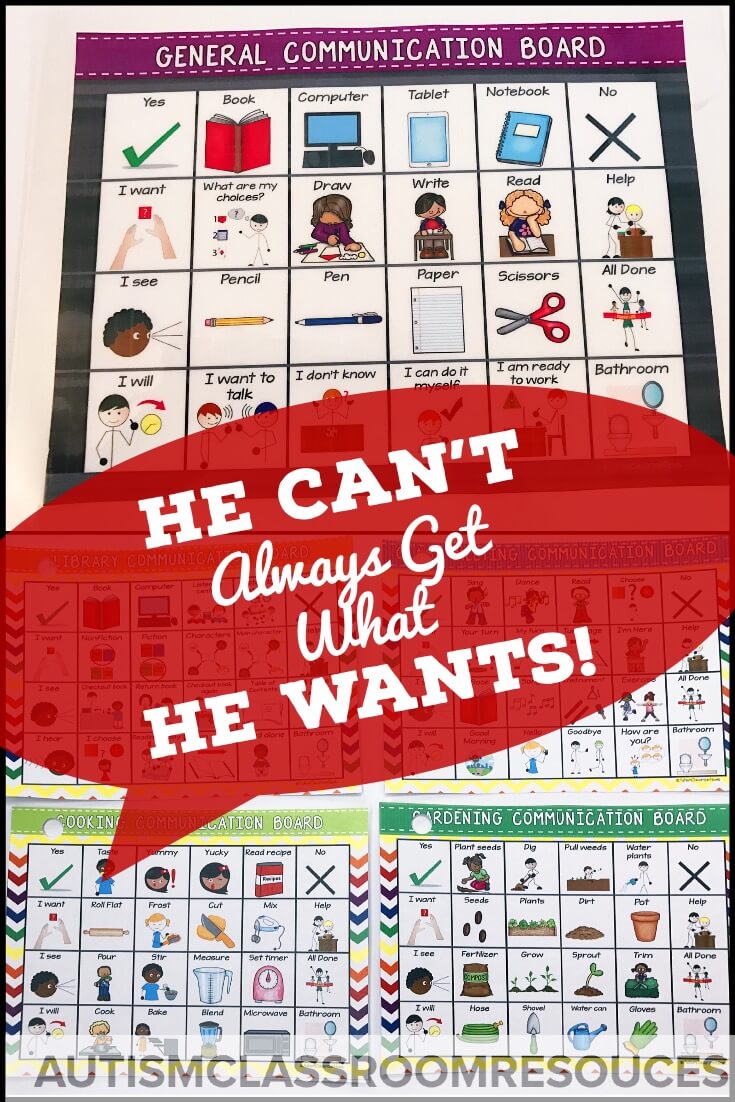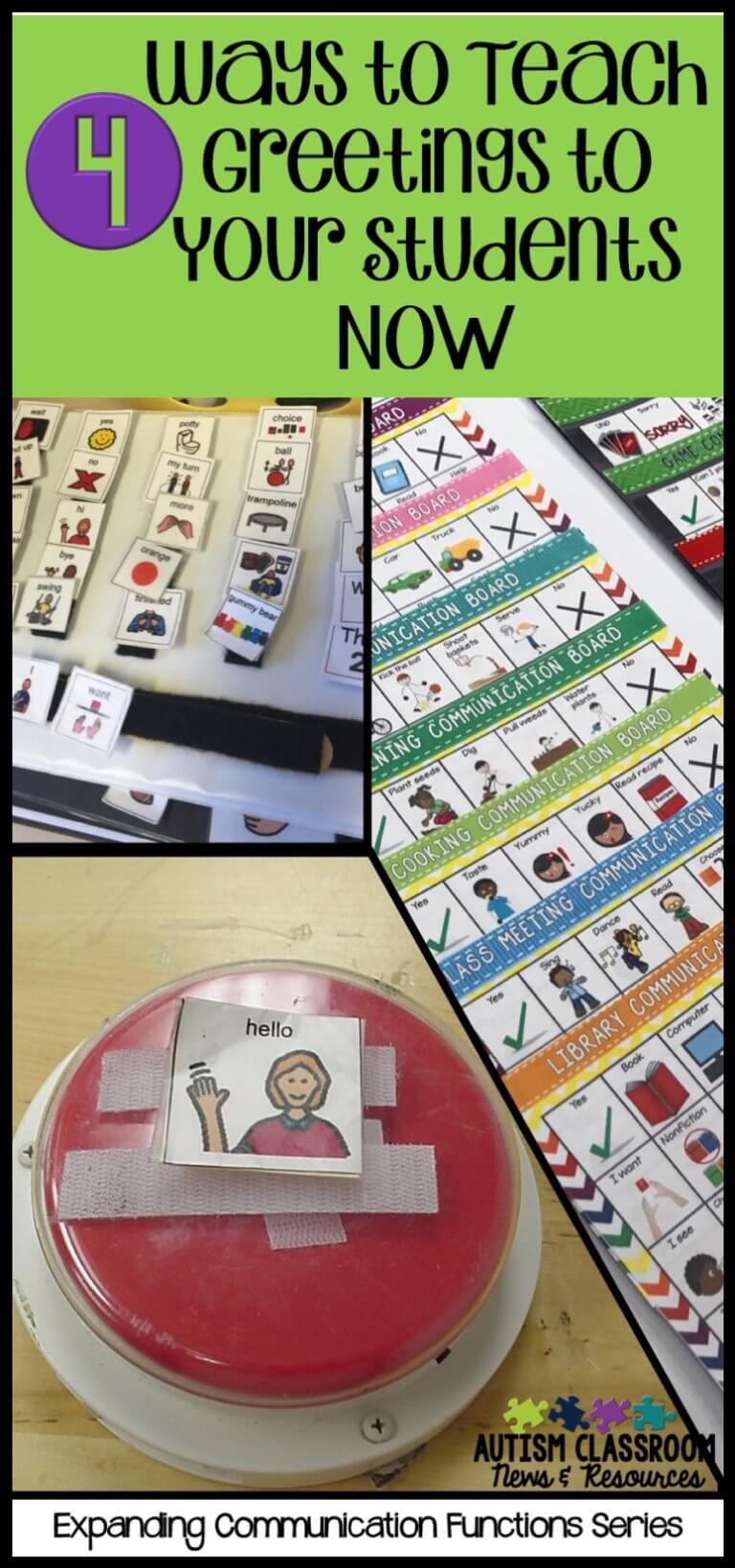
One of the questions I get frequently in the Academy and on social media or email is how to handle teaching students to request items. Specifically the question often centers around how to manage when the student asks for something he or she can’t have.
For instance, Jeremy is learning to make requests with a speech-generating device. He asks for things he commonly wants, but he really likes the iPad. And your classroom only has 2 iPads that are rotated among your students. So, of course, it’s not always available. And when he asks for it, he is still at the stag where he gets what he requests consistently and quickly to reinforce his request. But in real life, that’s not always possible. And then you worry about whether you are extinguishing his communication. Or he goes into a 30-minute meltdown because he didn’t get what he wanted. What’s a teacher to do?
We’ve all experienced this at some point. Sometimes we don’t have access to or have run out of what the student asked for. Or he’s had his limit. Other times he goes on a restrictive diet and we can’t give it to him anymore.
The behavior that ensues is sometimes related to frustration or because he doesn’t completely understand that you Can’t give it to him, instead of you Won’t. Or in the past, if he persists and the behavior continues, he’ll get the item (enter how extinction bursts work).
To address all these issues I thought I would talk about the Do and Don’ts to what to do when a student asks for something he can’t have—sometimes a million times!
Don’t
1. Don’t take the communication item off his board or device.
Yes, that might be easier for us, but essentially it’s avoiding the problem. It’s not teaching. In addition, it’s like taking away his voice. Imagine if this was a student you were teaching who could speak. You couldn’t take the name of the item out of his vocabulary once he has it. The same reasoning should apply to a student using AAC.
2. Don’t put his AAC tools out of reach.
Again, like in #1, you are avoiding the problem, not solving it. Students should ethically have access to their voice throughout the day…and we have to find ways to teach them to use them responsibly.
3. Give him the item, unless you have factored this into your instructional plan.
Eventually you will have to teach him that everything is not available all the time. But if you are just emerging with this skill, you might consider giving it to him each time or setting it up so you are able to do this (e.g., making sure you have lots of it available, or for Jeremy having a reserved iPad that you are using just for him right now).
DO
1. Set him up to teach this lesson explicitly.
Set up times when you can manage the behavior when you don’t grant his request. This way you have set aside time to wait out the behavior if you have to.
2. Start with less preferred items.
Start your instruction on not getting something he asks for (or waiting for it) with things he requests that aren’t his most preferred item. That way the behavior may not be as severe when it happens. This way you can teach him how it works without as much of an outburst.
3. Teach him waiting instead of just denying him something.
That way you can eventually give him that highly desired item (i.e., iPad) once he waits. I’ll do a post soon on teaching waiting.
4. Use concrete signs of unavailability
You can also show him concrete signs that something isn’t available, such as showing him an empty container (e.g., empty cereal box or chips bag). Keep empty containers around so you can pull them out to show him. This may help him understand that something simply isn’t available. Let him hold and inspect the container, turn it upside down, etc. to help him understand it. For the iPad or computer, try putting it in a parking lot or put a box over it so he sees it’s off limits.

If he uses AAC with pictures you can manipulate, put an X over it on his PECS book or schedule. Practice this type of strategy until they can handle not getting those less preferred items, and then gradually increase to more preferred items.
So what other strategies do you have for teaching students to wait or teaching students to accept no when making requests?
And of course we have to move beyond requesting at some point…if your student is at that point in learning, try this post.
Looking for tools to help with your students communicate effectively in the classroom? Try my communication boards.
Until next time,







